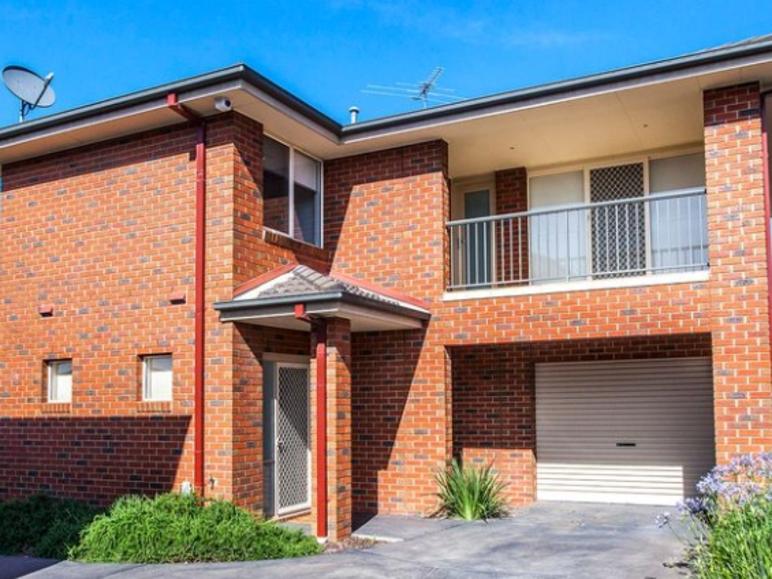Melbourne is the nation’s second most-affordable capital for tenants. Picture: Tony Gough
The pandemic has significantly improved rental affordability in Melbourne as a whole — but new research shows this has not applied equally across the city, with low-income earners still facing “severe to extreme rental stress”.
The city’s Rental Affordability Index has jumped 8.9 per cent annually to 140 — the highest score achieved in eight years — to make it the nation’s second most-affordable capital for tenants behind Perth.
Rent was eating up 22 per cent of the average household income in greater Melbourne in the June quarter, according to the report by National Shelter, Community Sector Banking, Brotherhood of St Laurence and SGS Economics & Planning.
RELATED: Melbourne vacancy rates: Vacant rentals on rise in inner suburbs
COVID-19: Renters accessing super, skipping meals to make ends meet
Regional Victorian rents have largest jumps, led by Benalla
There are good opportunities for Melbourne tenants in some sections of the market.
Affordability has declined in some suburbs, including Springvale. No. 3/38-40 Kemp Street is available for $495 a week.
It deemed this an “acceptable” level, coming in well below 30 per cent where rental stress kicked in, and noted the “stark” improvement “has almost entirely been driven by the decline in rents … caused by the onset of the COVID-19 pandemic”.
But the research also found the increased affordability had “not been even” across Victoria’s capital.
Melbourne’s inner city, inner northeast and tertiary education precincts had experienced the biggest improvement, with the CBD, West Melbourne, Southbank, South Yarra, Carlton, Alphington and Ivanhoe shifting from “unaffordable” or “moderately unaffordable” to “acceptable”.
This pattern was also evident in Hawthorn, Malvern and Glen Iris.
But affordability had deteriorated further in the middle- to outer-northeast corridor, in suburbs like Kew East, Balwyn North, Eltham South and Warrandyte, as well as in Airport West, Keilor Park, Ringwood, Springvale, and Elsternwick.
Brighton East was identified as Melbourne’s least affordable suburb for tenants, with 36 per cent of the average household income going to rent.
Brighton East is the city’s least affordable suburb for rentals. No. 31 Clinton Street is advertised for lease at $1100 a week.
Affordability has also slipped in Airport West. No. 1/88 Hawker Street is up for grabs at $400 a week.
It was followed by Brighton, Albert Park and Middle Park (all 34 per cent), Balwyn North (32 per cent) and Hampton (30 per cent).
The report stated the “collapse of international tourism and student demand” had caused rents to plunge for one-bedroom and two-bedroom homes.
But this had been “negligible” for low-income Melburnians, many of whom remained in rental stress.
Single-pension households were still required to shell out 65 per cent of their income on rent in greater Melbourne, deemed an “extremely unaffordable” level.
Rent remained “severely unaffordable” for a single person on JobSeeker (56 per cent), a pensioner couple (45 per cent) and a single part-time worker parent on benefits (40 per cent), and “unaffordable” for a full-time hospitality worker (31 per cent).
National Shelter executive officer Adrian Pisarski said despite the COVID-enhanced JobSeeker being “a welcome boost to many low-income renters”, it was “not enough to lift them out of rental stress”.
People moving to Melbourne have a raft of rental options.
“This shows the depth of our rental affordability problem, where even with additional support, there is not one place in Australia where a JobSeeker recipient can rent affordably,” he said.
Mr Pisarski praised Victoria’s $5.3bn budget commitment to build create 12,000 social and affordable homes over four years, calling on the federal and other state governments to boost this by joining forces in a “truly national effort”.
Brotherhood of St Laurence director of research and policy Shelley Mallett added the September reduction to JobSeeker, and future planned cuts, would further increase rental stress among low-income earners.
MORE: BuildHer Collective: Bentleigh California bungalow before and after
Home Goals with Bianca Chatfield: Getting finance ready for a loan
Rod and Andrea Sylvia: Champion bodybuilders list ‘magical’ Mildura home







